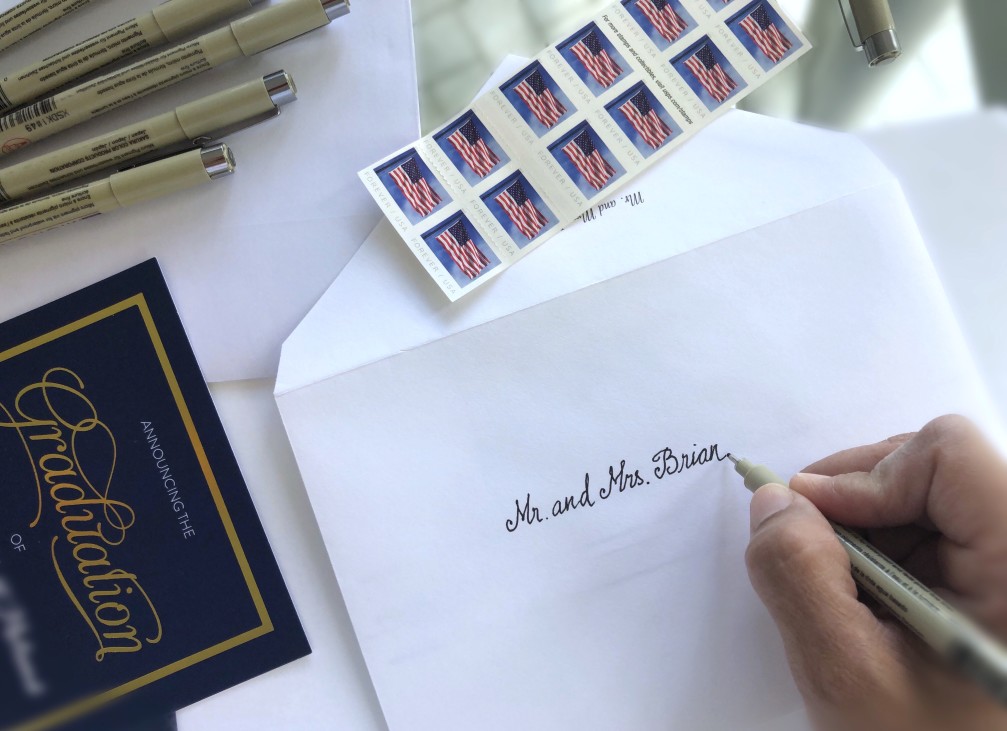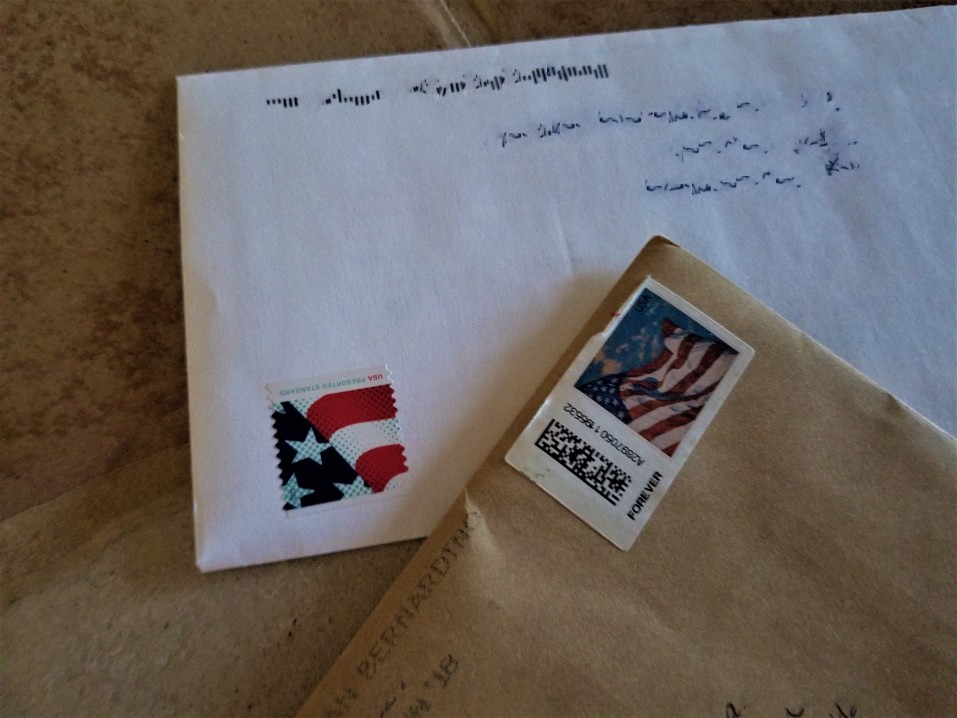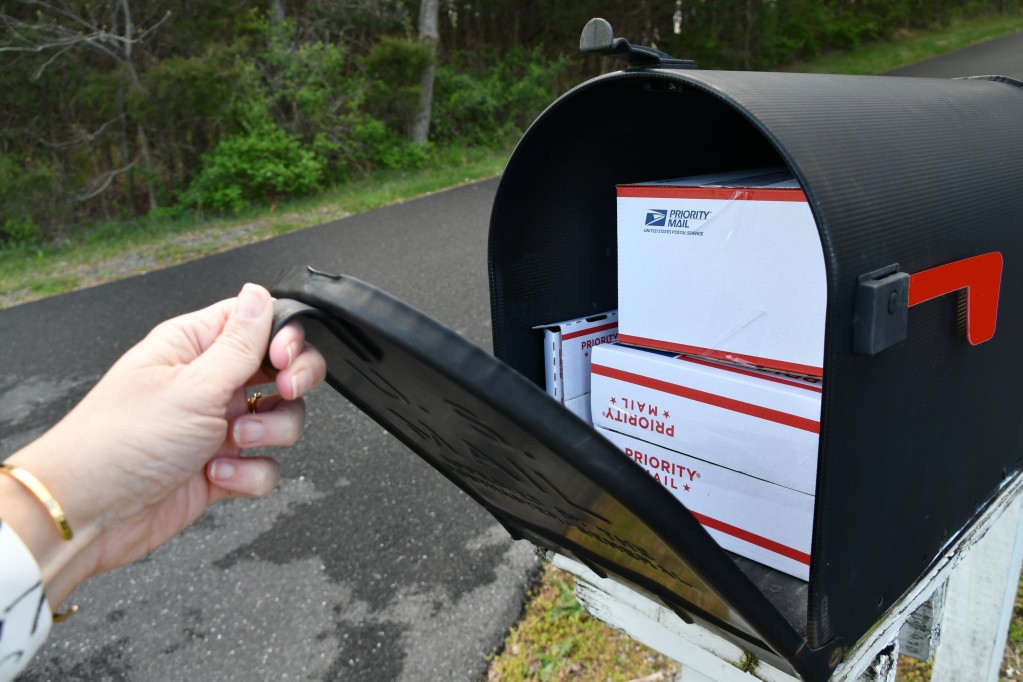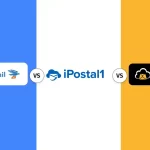A lot of people (understandably) think that one stamp attached to an envelope lets them send almost anything that are fit through the mail.
And while that’s usually the case for most folks, truth be told there is a limit to what you’re able to send through the USPS system with just a single first-class or forever stamp attached.
Yes, you’re reading that right.
Even if you can somehow shoehorn 30 or 40 pages of paper into a single envelope you’ll not be able to send it through the mail with just one stamp attached.
Instead you’ll have to attach two or three extra stamps (maybe even different kinds of stamps), and that something that we are really going to dig a little bit deeper into in just a moment.
There are some exceptions to this rule, for sure.
For example, flat rate envelopes are always going to be charged at a single flat rate – though these aren’t generally sent with “stamps” attached in the first place.
On top of that, a postcard can be shipped for the unbelievably low price of postcard postage on its own and you’ll never have to attach a second or third stamp to one of those.
Let’s jump into better understanding when one stamp works and when you might have to get your hands on a couple of extras below.
Will One Stamp Cover All My Mailing Needs?
As we just talked about a moment ago, not all of your envelopes are going to be able to go through the mail if you have just a single stamp attached to them.
Yes, your average letter (even a four or five page letter) folded up neatly into a piece of paper won’t require you to have multiple stamps attached.
You’ll be able to grab a $0.55 (as of January 2021, anyway) stamp, attach it to your envelope, and then drop it off in a mailbox, at the post office, or leave it in your own mailbox with the flag up.
There’s no real mystery there!
As soon as you start to add other things to that envelope, though – including extra pieces of paper – you may not be able to get away with sending it through the mail with just a single stamp.
It turns out that stamps aren’t sold on an “envelope” basis and haven’t been sold that way in almost 150 years.
No, when you buy a first-class or standard stamp (or a forever stamp) you’re really buying the postage for something to go through the mail that weighs less than one ounce.
The $0.55 stamp entitles you to send a single ounce of mail through the postal system.
Now, the overwhelming majority of postal officers, workers, and even postmasters aren’t going to lose their mind if you’re stamped envelope comes in weighing at 1.3 ounces or so. Once you start to push beyond 1.5 ounces or more you really start to stretch things quite a bit.
This is when you’ll have to pick up another stamp, or even a partial value stamp, to get your mail delivered from Point A to Point B.
We talk about that a little more below, too.

How Many Sheets of Paper Will One Stamp Cover?
There’s no real hard and fast rule to how many sheets of paper a single stamp will cover when you want to send it through the post, though there are “rules of thumb” you can stick to for sure.
The overwhelming majority of people that want to send letters that are four or five pages long (standard pieces of paper, standard sized, and standard weight/thickness) are never going to have to stick a secondary stamp on top of their envelope.
No, even if you go (slightly) over the 1.0 ounce limit we mentioned earlier you are going to be just fine.
Start to stretch past that, though, and that’s when things can begin to get a little bit expensive.
Some postal workers and postal officials are going to let you get away with up to 1.9 ounces of mail in your envelope before they want you to spring for another stamp. Any higher than that, though, and you’ll have to pay extra for another stamp.

How Do I Know How Many Stamps to Include?
There are a couple of things you can do to figure out exactly how many stamps you need to attach to your envelope or parcel before you drop it in the mail or drop it off at the post office.
The easiest thing to do is to simply keep your envelopes relatively lightweight, maybe even splitting up your letters into a couple different envelopes if you are nervous about going overboard.
Just to reinforce once again, four or five pieces of paper folded up in an envelope isn’t ever going to push you over the edge.
10, 15, or 30 pieces of paper folded up – bursting at the seams – is definitely excessive and will require a couple of extra stamps or splitting that envelope up into a couple of different letters.
Another thing you can do is pick up a kitchen scale that is sensitive enough to measure single ounces and fractional ounces, one that you can lay your letters down on top of before you start sticking any stamps to them.
The scale doesn’t have to be laser accurate or unbelievably precise, either.
Like we mentioned a couple of times already, the overwhelming majority of people in the post office are going to let your letter slide if it’s a little bit overweight – usually up to 1.9 ounces.
As long as you are below the 2.0 ounce threshold you should be good to go!
Of course, if you do a lot of mailing it may not be a bad idea to get your hands on one of those postal scales or postal meters so that you can really zero in on how much your postage is going to be.
That is totally overkill for your average person (unless you’re sending hundreds of pieces of mail each week), but if you really want to double check and be sure that your postage is good to go it’s the best way at home to do so.
Finally, you could always wait to put stamps on your envelope until you pop down to your local post office and have them check the postage for you.
The big benefit here, of course, is that you’re not only going to be able to get exactly the right amount postage (the postal worker or post master will help you here) but you also be able to drop your letter in the mail straightaway and have it start its journey to your intended recipient at the same.
That’s a real “one-stop shop” kind of solution that’s going to work wonders for sure.
All in all, if you are nervous at all that a single stamp won’t be enough just have a second stamp ready.
You could even attach both stamps (or attach “fractional” stamps) to make sure that you cover the postage. Most of the time you won’t have anything to worry about, though.
What About Forever Stamps?
The beauty of Forever Stamps is that they never lose their value even if the price of postage goes up.
And, if history is any indication whatsoever, the price of postage ALWAYS goes up.
In fact, it’s going up faster and faster than ever before and shows absolutely no signs whatsoever of slowing down anytime soon. We might end up spending a dollar or more per stamp in the very near future.
With Forever Stamps, though, you are guaranteed to be able to use that stamp as a traditional first-class rate stamp no matter what you paid for it on its face value.
In January 2021 a first class stamp costs $0.55 – and that’s what Forever Stamps cost as well.
Obviously, the incentive here is to buy as many first class stamps as you can. You really want to pile them up, getting as many as you need to cover the next two or three years (or more) of mailings if you want to be sure that you lock in these low rates.
Like we talked about a second ago, the price for first-class mailing has been jumping year after year.
It wasn’t all that long ago that a single first-class stamp would have set you back $0.22. We are beyond double that right now.
Do you want to have to pop down to the post office in five or six years and pay a dollar or more for stamp that you know you could have covered for half that if you purchased Freedom Stamps in advance?
The answer is probably no!
When Will Stamps Alone Not Cover My Postage?
Stamps alone aren’t going to cover your postage in a couple of situations, usually all pertaining to packages and parcels versus straight up envelopes and letters.
Obviously, if you’re going to stuff a letter envelope with everything but printed paper the chances are pretty good you’re going to shoot past that 1.9 ounce, single stamp limit we have been talking about this whole time.
With packages, though, a stamp won’t ever be good enough to send it through the mail – you’re going to have to pay based off of weight, speed of delivery, and a handful of other criteria and features that you select moving forward.
Flat rate boxes, on the other hand, definitely do keep shipping costs low for the most part.
Think of these as “Forever Stamp-esque” kinds of postage, insofar as much as you can pay a single price to have something sent halfway across the country no matter what.
If you want to take advantage of tracking on your envelopes, if you want to add insurance to your envelopes, or if you want to add any other extras (like a signature of receipt, for example) you’re going to have to pay a premium to leverage those solutions – and all of that goes on top of your first-class stamp.

How Do I Make Sure My Mail is Good to Go?
The easiest way to know that your postage is all taking care of and that your mail is good to go is to bring it down to your local post office and double confirm it with someone that works there.
They’ll be able to take one glance at your envelope, heft to it in their hands, and know almost immediately (thanks to their experience) whether or not that single first-class stamp is going to cover things.
Sometimes it will. Sometimes, though, it won’t – but you’ll be in exactly the right place to purchase that extra postage and have it sent off ASAP.
It really doesn’t get much better than that!

Manage Mail Better with a US Global Mail Account
While the USPS does a fantastic job of helping people with all their mailing needs, there are a lot of alternative services that provide more modern mail solutions – including those at US Global Mail.
One of the preeminent virtual mailbox services on the planet, US Global Mail is very much a modern mailing services from top to bottom.
You’ll be able to take advantage of services and solutions provided by US Global Mail not available with the USPS, and some of them not available anywhere else.
We are talking about full digitization of every piece of mail you have sent to your physical US Global Mail address (no PO boxes here), real-time mail alerts so that you know exactly what has arrived – and what hasn’t, and a whole host of other solutions that make this a very attractive option.
If you’d like to learn more about this modern mailbox service and how it can help you streamline your day-to-day mail needs, check out everything they have to offer on the US Global Mail website.
Don’t be shy about reaching out to them for interest any of your questions you might have or help setting up a new account, either.





